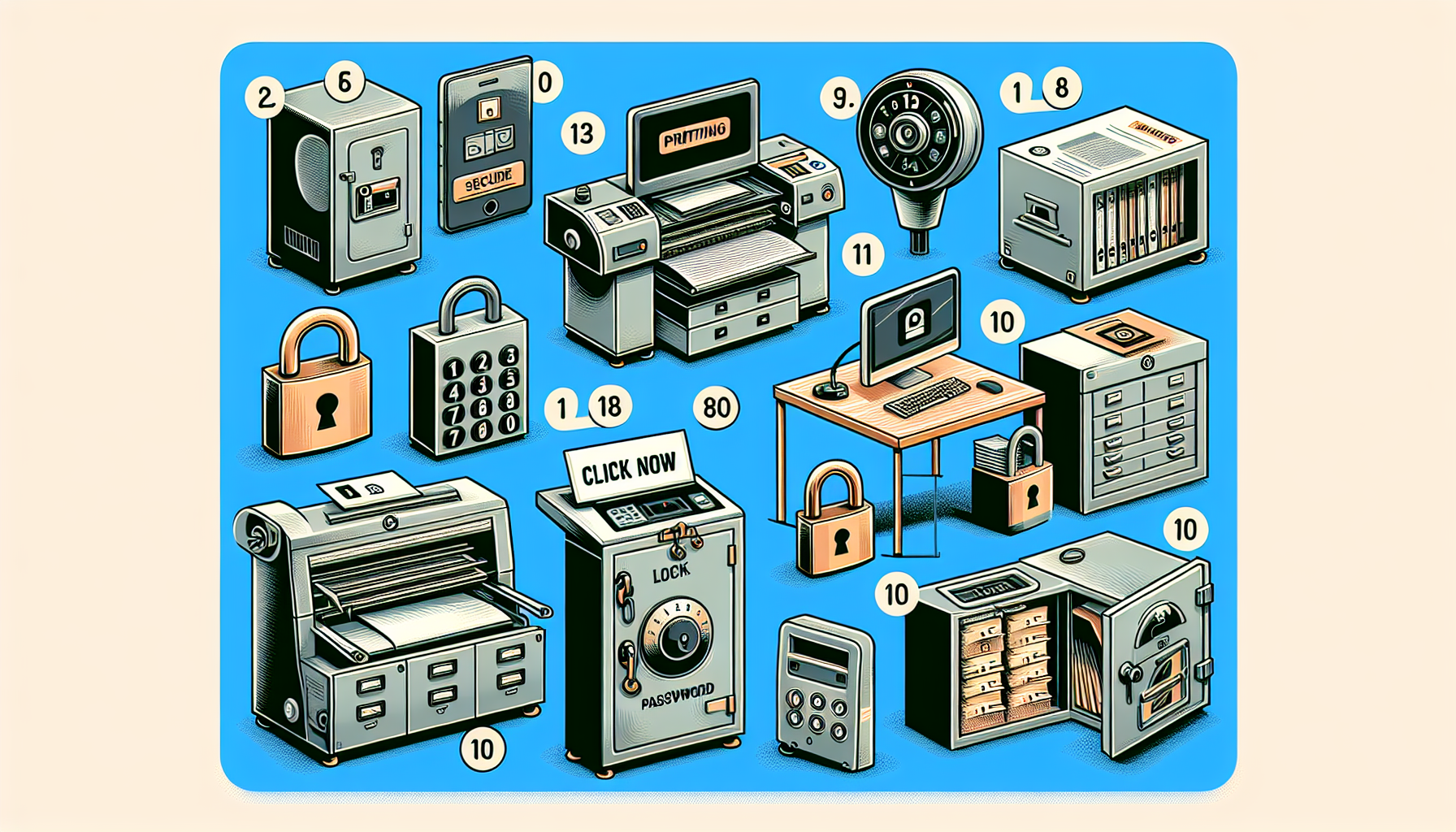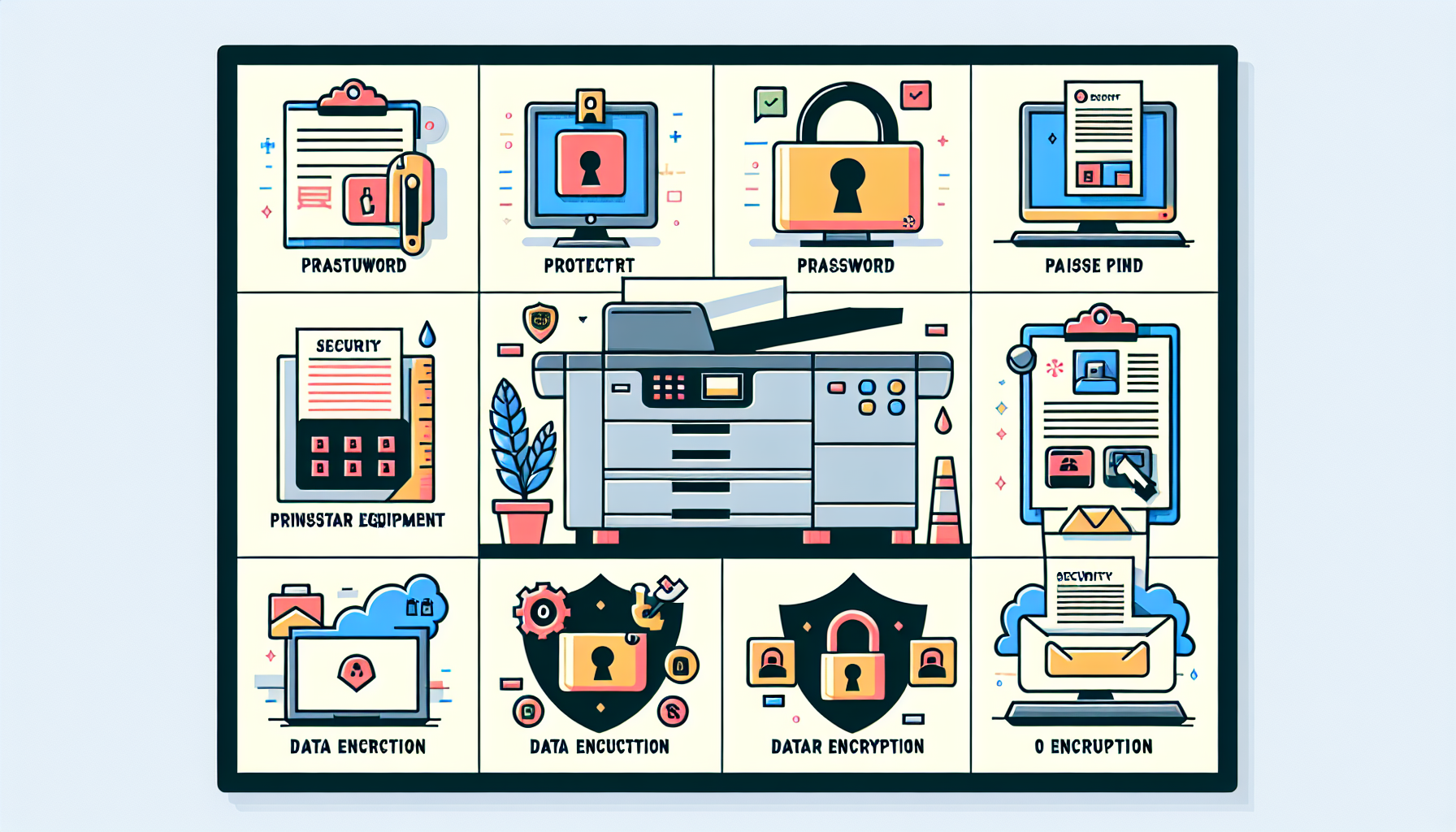Securing business printing devices
In the digital age, where dematerialization takes a prominent place, it is crucial not to neglect the security of our printing means. In business, a well-protected printing fleet is a major asset for preventing information leaks and guaranteeing the confidentiality of your sensitive data. As unexpected as it may seem, even the fax can become a vulnerability in securing your business.
A need for security comparable to infrastructure
Just like the 800 French bridges require work to ensure their security, business printing devices deserve equal attention to protect the integrity of print workflows. It is not because these devices are often relegated to the shadows of offices that they should be neglected in terms of security.
Cutting-edge technologies for optimal security
Like the platform Resideo ProSeries, dedicated to the safety and protection of people, there are solutions to effectively secure printing devices. These advanced technologies guarantee the integrity of printed documents and preserve the confidentiality of information.
User authentication and access control
The first step towards effectively securing your devices is a security system.authentication robust. Thus, like securing construction sites Grand Paris Express, it is essential to have a rigorous access protocol in place to ensure that only authorized employees can use the printers.
Update and maintenance: critical maintenance
Just as it is essential to carry out security work on structures at risk, updating printer software is essential. These updates contain fixes to close potential security vulnerabilities and improve device functionality. Companies such as Microsoft, with their solution Universal Print, simplify these processes for an optimal user experience.
Document tracking and flow management
There print workflow management is also crucial. It is possible to implement software solutions capable of tracking each printed document, monitoring printing activities and even restricting printing to specific documents. This prevents, for example, sensitive documents being printed without supervision or without necessity.
The future of print security
The evolution of technology is not without bringing its share of solutions and possibilities. By following the market trends, as Pixid does for recruitment in the construction industry, printing companies are developing solutions that are increasingly adapted to the specific needs of users, integrating the security as an inseparable aspect of performance.
By seriously considering securing your printing fleet, you build an additional barrier against external threats, while consolidating the confidence of your customers and employees in the protection of their data. By doing this, you not only respect confidentiality but also the sustainability of your business.
The security of printing devices is therefore a crucial issue that must be integrated into the overall security strategy of companies. This is not an additional cost but an investment in the future and reputation of your organization. Learn from security advancements in other industries and translate these best practices to ensure a reliable and secure business environment.
Security protocols for a printing fleet

Sizing security in the age of innovation
In the professional world, where the dematerialization of data does not erase the need for secure and reliable printing, it is crucial to apply security protocols rigorous to your printing fleet. Like Colas which is developing its protocol to give confidence in AI, it is essential to establish absolute trust in the technologies we use every day. The integration of the latest technological innovations into professional printers must be accompanied by updated security measures.
The importance of centralized management
Setting up centralized management of your printing fleet is a decisive first step. In order to control access and monitor printing activities, centralized management software not only reduces the risk of confidential information leaks, but it also optimizes the performance of your devices. Imagine the complexity of managing the security of a network like that required by 800 French bridges undergoing security work ; every printer in your business should be monitored with the same rigor.
Strengthen access protocols
Modern business printers must be equipped with advanced authentication systems to ensure that only authorized people have access to printing features. Like the commitment of LOXAM for safety, it is important to implement magnetic cards, PIN codes or even biometric solutions for optimized security.
User training
To ensure security protocols are followed, it is essential to educate users on print security best practices. As highlighted by the initiative of reinforced prevention on construction sites, awareness is essential. It is not enough to have secure tools; users must be trained to use it properly.
Evaluate and continuously improve
A security protocol effective must be scalable. Thus, carrying out regular security audits and updating protocols is as vital as the work of rehabilitation of Notre-Dame-de-Paris. Continuous assessment helps detect potential vulnerabilities and respond quickly to maintain a high level of security in your printing fleet.
The issue of environmental responsibility
Printer security is about more than data protection; it also includes the environmental responsibility. In the dynamics of material reuse, ensuring that equipment is eco-responsible and participates in the circular economy circuit is a guarantee of sustainability.
In short, the implementation of efficient and responsible security protocols is a guarantee of credibility for your company and trust for all users. By adopting robust and scalable security measures for your printing fleet, you not only promote the protection of information but also the sustainability of your professional activity.
Risk Management for Networked Printers

In today’s digital age, where the flow of information is as rapid as it is essential, organizations face increasing challenges in terms of cybersecurity. Among them, networked printers constitute an attack vector often underestimated by companies, yet they are capable of imposing serious risks. Analyzing and preventing these threats becomes a priority mission to guarantee the data security.
Understanding the value of cyber prevention
Faced with the evolution of cyber threats, such as ransomware, prevention is the first line of defense. Networked printers, often overlooked during security audits, can serve as entry points for such attacks. Perform a risk analysis Regular monitoring is essential and should include assessment of the printing infrastructure, thereby identifying vulnerabilities that could be exploited.
Why do attackers target printers?
Networked printers are seen as prime targets because they process a large amount of sensitive information and are often less well protected than other systems. Additionally, they can serve as a backdoor into the network, allowing cyberattackers to move laterally and reach other critical systems. The information shared by Le Figaro highlight the importance of not underestimating these connected devices.
Adoption of cybersecurity standards: the NIS 2 regulation
Regulations such as regulations NIS 2 set new requirements in terms of PKI (Public Key Infrastructure) and certificate management, reinforcing the need to adopt robust security practices. Compliance with these standards is a guarantee of prevention against various cyberattacks and helps raise companies’ awareness of the risks linked to the neglect of printing systems.
Protect the integrity of the printing network
Securing printers involves several technical and organizational measures. First of all, it is recommended to integrate the printers into the IT security policy overall company. This includes using strong passwords, applying regular security updates, and implementing monitoring and alerting systems. Installing a printer on a network should be done carefully, avoiding outdated methods like the old SMB protocol for machines outside the domain.
The future of cybersecurity and the role of the architect
Cybersecurity professions evolve with threats, and the role of the cybersecurity architect is becoming more and more crucial. This professional is responsible for designing resilient and adaptive systems in the face of constantly changing risks, including in the print manager. To find out more about this profession of the future, consult the information provided by silicon.
Four practical tips for securing your printing fleet
- Train your staff to recognize potential threats and use cybersecurity best practices.
- Ensure printer firmware is regularly updated to correct known security vulnerabilities.
- Configure protocols for authentication and encryption of data sent to the printer.
- Regular audit of your printing fleet by cybersecurity experts.
For more detailed advice on protecting your information systems, discover the recommendations of IT security specialists on silicon.
In conclusion, as the cyber threat landscape continues to expand, securing print infrastructures is no longer an option but a necessity. Leveraging current knowledge in prevention, regulations and practical solutions will be instrumental in ensuring the integrity, confidentiality and availability of data processed by your company’s networked printers. Taking the path of caution and expertise is the best way to guard against the ever-growing specter of cyberattacks.
Strategies to Defend Against Cyberattacks on Printers

In the digital age, the cybersecurity has established itself as an essential pillar of a company’s infrastructure. In the current context where cyberattacks are becoming more sophisticated, traditional defense methods seem to be running out of steam and a collective awareness is emerging of the need to strengthen the security of all elements of the network, including professional printers and scanners that are often overlooked.
Recent attacks, such as the one attributed to a Algerian hacker against French ministries, highlight vulnerabilities that can affect organizations of all sizes. Thus, the defense strategy must involve a multi-layered approach to addressing these pervasive and evolving threats.
Team education and awareness
The first line of defense against cyberattacks remains raising awareness among employees who are often the weak link in the security chain. THE employees as an important link in the defense strategy require regular training in best practices, to identify and avoid pitfalls such as phishing attacks that could compromise equipment like connected printers.
Adopting a Robust Security Framework for Print Fleets
Printing fleets should be included in regular security audits to ensure their integrity. This involves the use of up-to-date software, user authentication and encryption of data sent to and from printers. Implementing specific firewalls and anti-malware protections for printing devices is also a necessity.
Implementation of a dedicated device security policy
Another line of defense consists of developing a specific security policy to printing devices. This includes clear guidelines on setting up, using and monitoring printers. Limiting access to features based on user needs and tracking printing activities can prevent sensitive data leaks.
Proactive incident response
Faced with a cyberattack, the ability to react quickly is essential. Businesses should establish an incident response plan, including printers, to limit damage and quickly get systems back up and running. This involves real-time monitoring of networks and the ability to isolate compromised hardware.
Towards adaptive and continuous cybersecurity
In a world where cyberattacks evolve faster than traditional defenses, the protection strategy must be dynamic and scalable. This means constant monitoring of new threats and the implementation of automated systems capable of learning and adapting to new threats.
In conclusion, printers and scanners should not be neglected in the strategy of computer security of a company. A multi-layered approach, encompassing both technology, processes and human awareness, becomes imperative to guard against cybercrime and ensure business operations continue securely.
Best Practices for Securing Print Data
In today’s digital age, managing and protecting print data has become a critical issue for enterprise IT security. It is essential to adopt good practices to avoid data leaks and guarantee the confidentiality of information.
Implementation of a strict security policy
The first step to securing your print data is implementing a strict and consistent security policy. This policy should cover all aspects of your printing infrastructure, including access rights, user device usage, and management of printed materials. A reference in this area is the guide to ANSSI, which provides an excellent basis for developing your own rules.
Access control
Securing data also involves strictly controlling access to printers and print files. This is to ensure that only authorized people can access sensitive devices and documents. Authentication by badge or confidential code is a recommended practice, which you can learn more about in the resources available at GinjFo.
Vulnerability and patch management
Business printers are computers in themselves. As such, they require special attention regarding vulnerability and patch management. Data must be protected in the same way as any other computer system. The site LeMagIT offers a range of resources on these topics to help you stay up to date and reduce risks.
Proactive printer maintenance
Proactive printer maintenance is just as important as IT systems management. Regular checks ensure that printer firmware and software are up to date. References such as EPFL will give you the procedure to follow for a console installation security of your devices.
User training and awareness
Users are often the weak link in IT security. It is crucial to train them on the risks associated with impression management, such as phishing. Resources explaining how to protect yourself from phishing are available on the websiteEPFL to raise awareness among your teams. It is also relevant to inform seniors, who may be less familiar with online risks, by consulting sites such as CapRetraite.
By following these good practices, you will thus be able to significantly improve the computer security of your print data. Each of these points should be considered an essential piece of a complex puzzle. A puzzle which, once complete, will establish a printing environment that is as secure as it is efficient. To go further, do not hesitate to consult the guides and other specialized resources in the field of IT security and the GDPR, such as the publications of the CNIL or the rules established for SMEs by GraphiLine.


Leave a Reply